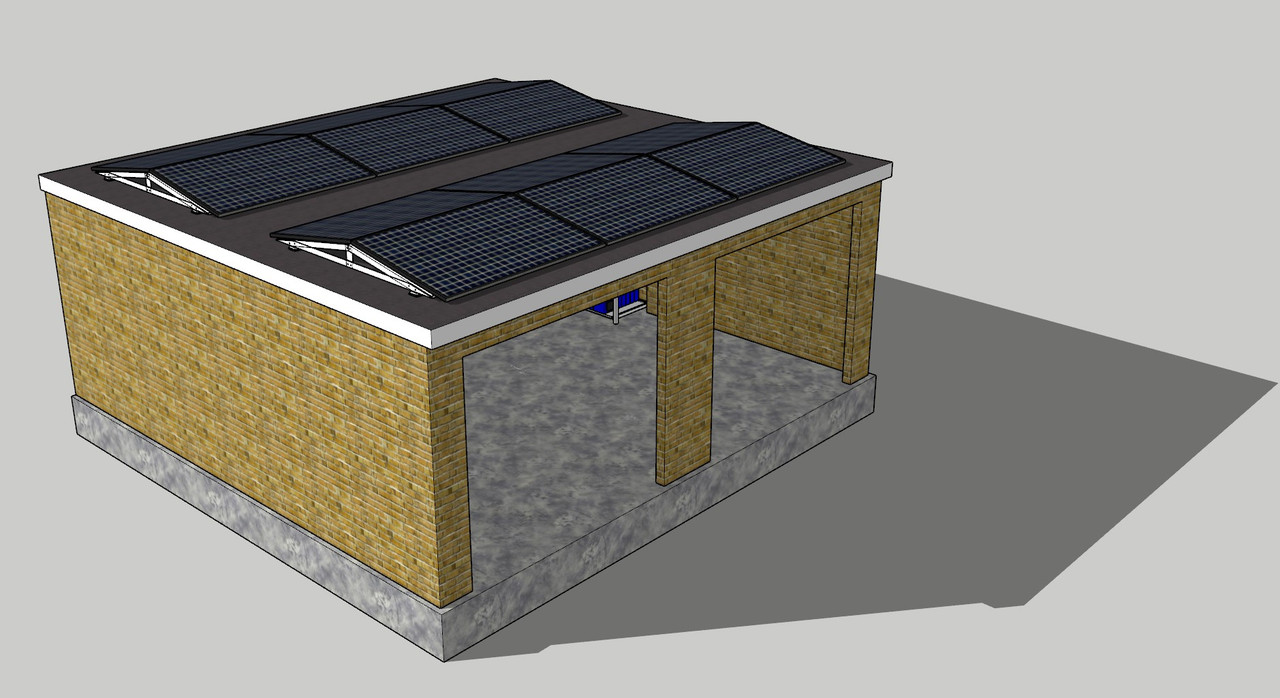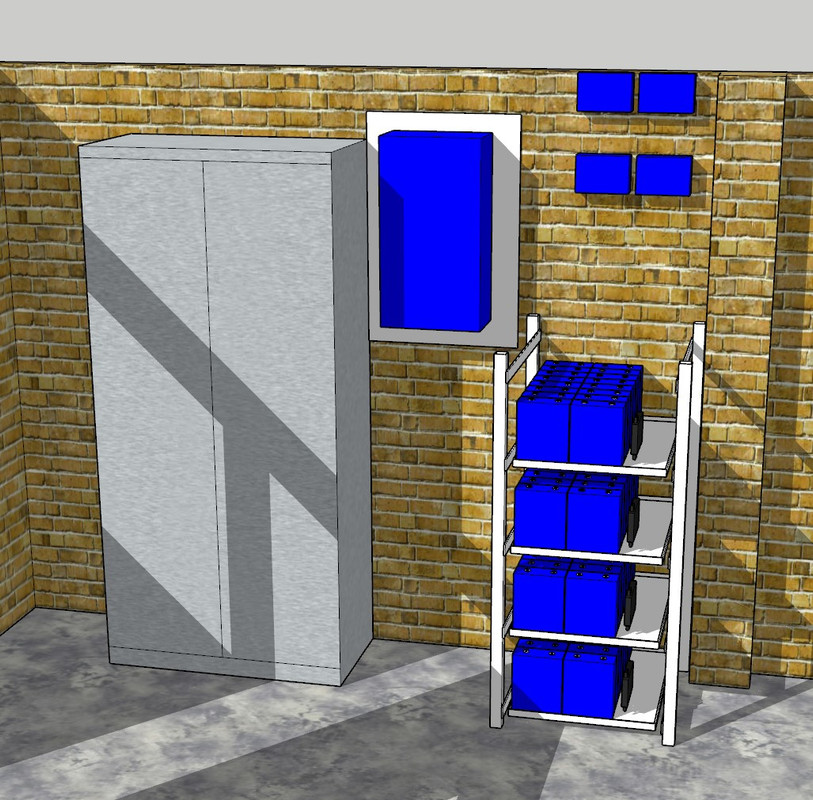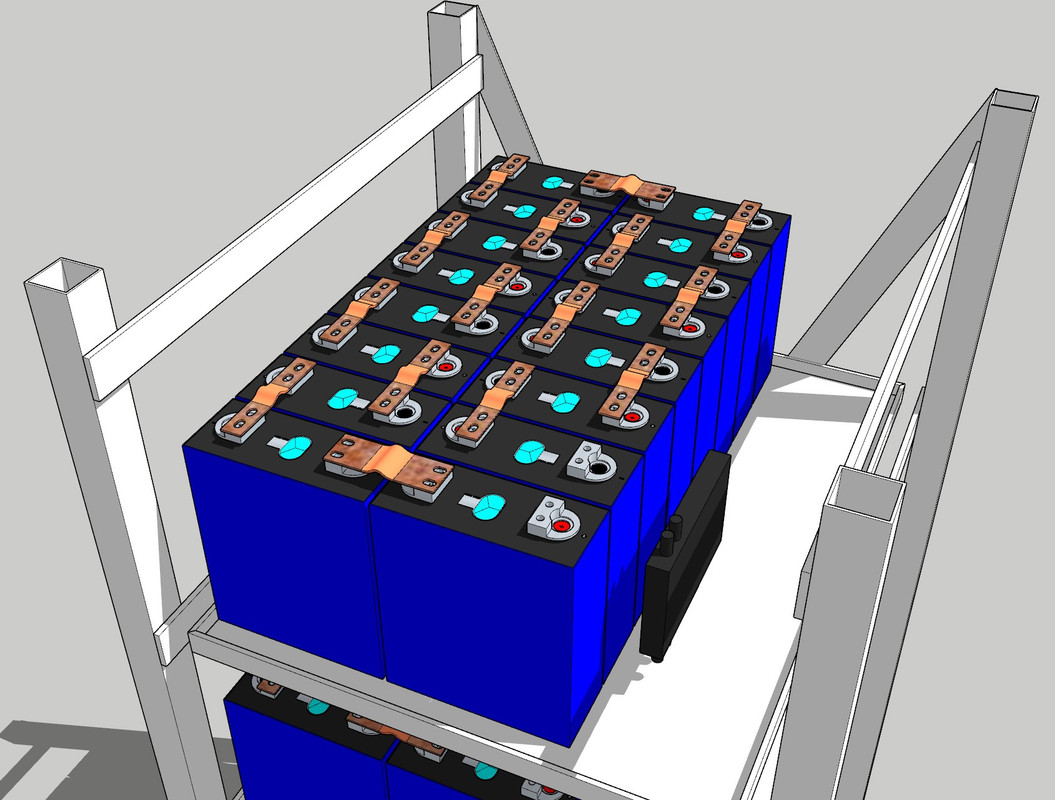Soldato
We already have 4kw of solar on our house roof, which was installed in December 2015, this is comprised of 16 panels witha Solaredge inverter and optimisers, and uses the best two roof's of the house.
As some of you might be aware on the solar thread I've been looking into getting an additional array installed on our detached flat roofed double garage, it will be 12 405w panels in an east west arrangement, the panel angle will be quite low at 10 degrees, this is to keep below planning requirements, anything over 200mm above the highest part of the rood and you require planning permission.

The mounting brackets for the panels are custom designed, and will be made by myself using 50 x 50 x 3mm angle. I still need to get up on the roof, and measure the pitch and allow for that in the design.
I will also be making a custom battery rack of my own design, it will have four pull out draws, each draw can hold 16 cells, and using 16 280ah cells makes 13.44kWh to 14.56kWh battery

As this is a garage install I need to run a new sub main from the existing incoming supply to the garage, then a new sub main back to the existing, this will be using 25mm SWA, and will mean the whole house will run off the inverter in the event of a power cut.
Close up of the battery with busbars

Oh, and yes I do have an electrician for the 240v AC work.
As some of you might be aware on the solar thread I've been looking into getting an additional array installed on our detached flat roofed double garage, it will be 12 405w panels in an east west arrangement, the panel angle will be quite low at 10 degrees, this is to keep below planning requirements, anything over 200mm above the highest part of the rood and you require planning permission.

The mounting brackets for the panels are custom designed, and will be made by myself using 50 x 50 x 3mm angle. I still need to get up on the roof, and measure the pitch and allow for that in the design.
I will also be making a custom battery rack of my own design, it will have four pull out draws, each draw can hold 16 cells, and using 16 280ah cells makes 13.44kWh to 14.56kWh battery

As this is a garage install I need to run a new sub main from the existing incoming supply to the garage, then a new sub main back to the existing, this will be using 25mm SWA, and will mean the whole house will run off the inverter in the event of a power cut.
Close up of the battery with busbars

Oh, and yes I do have an electrician for the 240v AC work.




